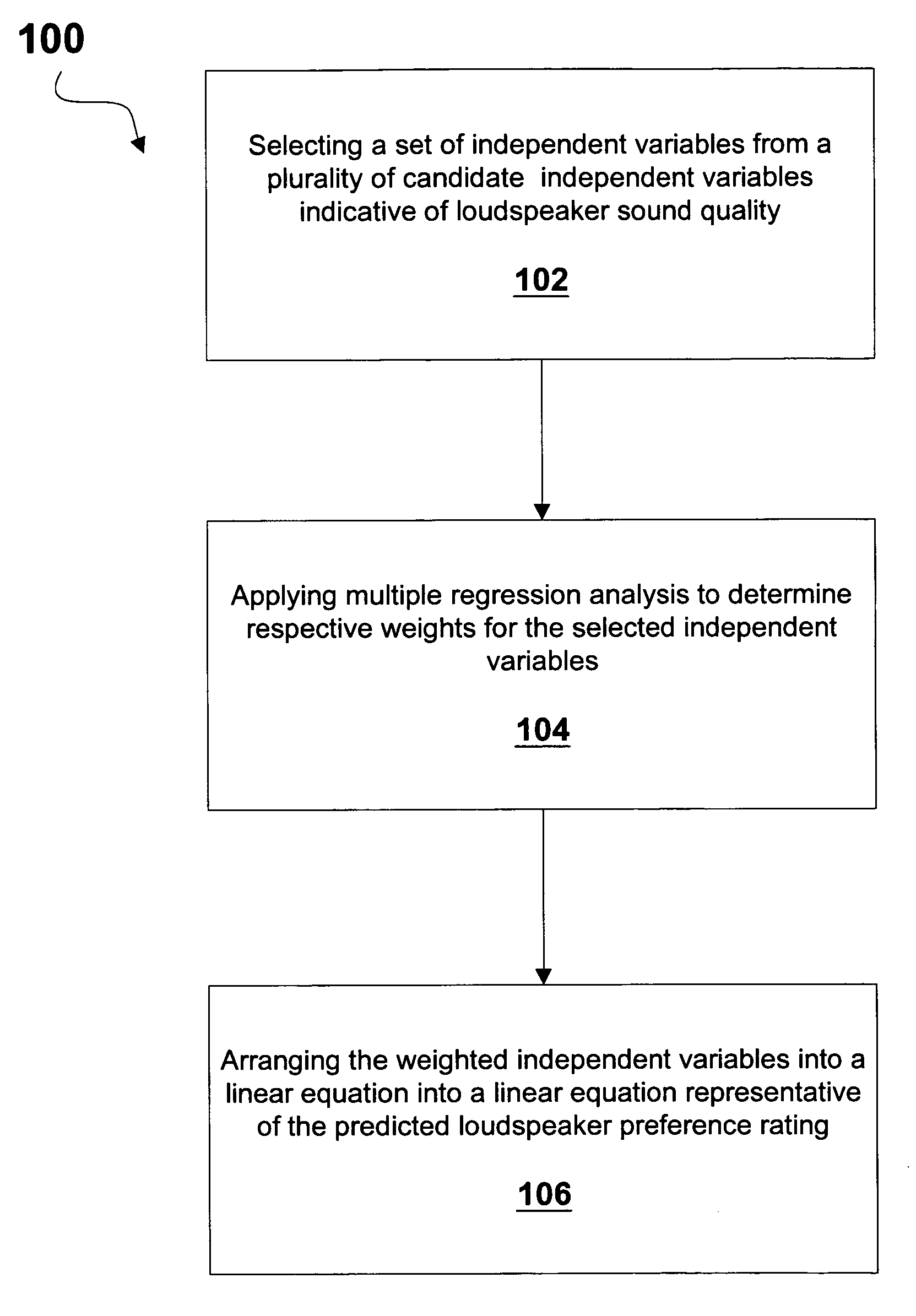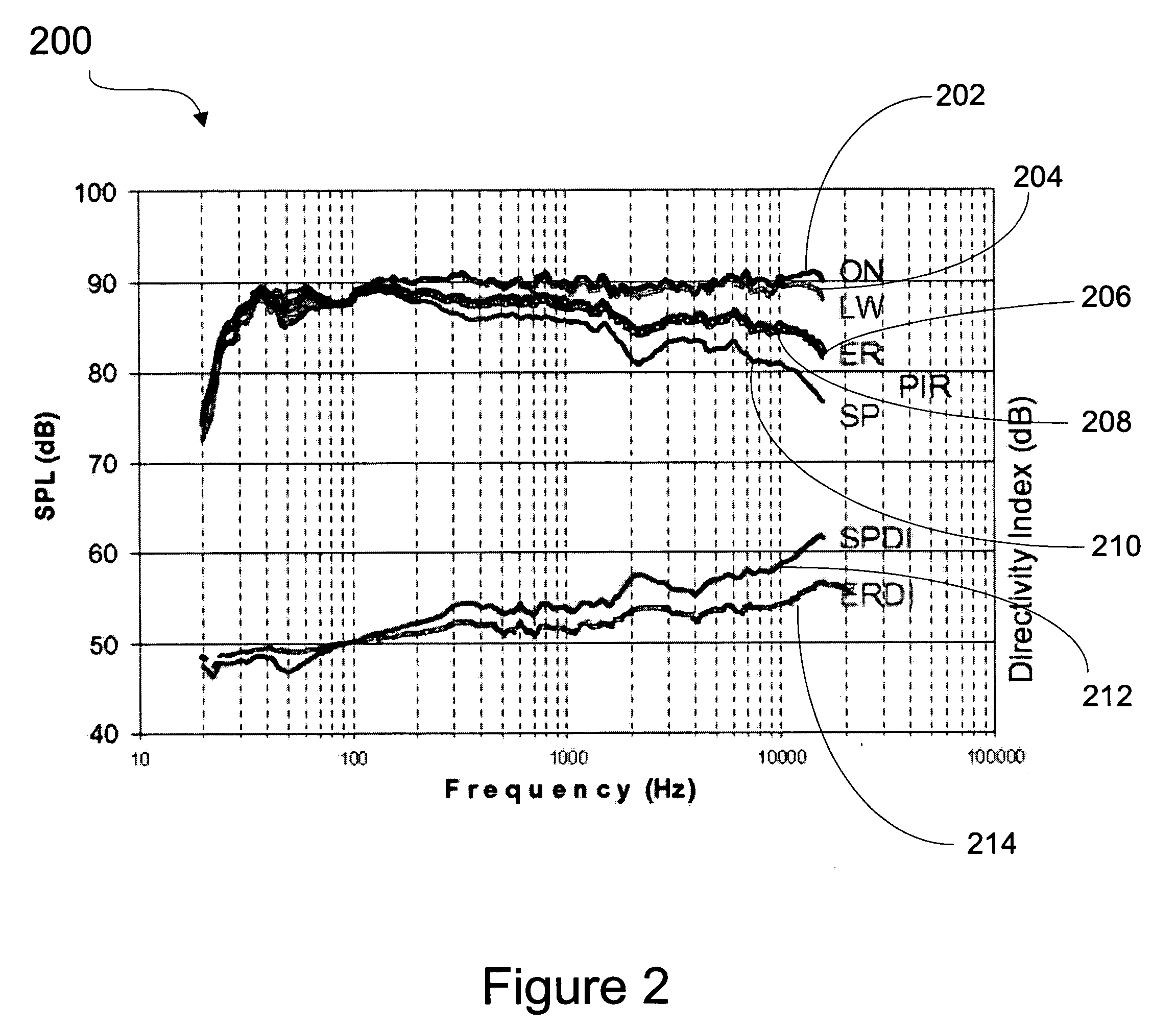Method for predicting loudspeaker preference
a loudspeaker preference and listening test technology, applied in the field of loudspeakers, can solve the problems of poor agreement about the way the loudspeaker should be measured, time-consuming and expensive, and difficult to perform properly controlled listening tests on loudspeakers
- Summary
- Abstract
- Description
- Claims
- Application Information
AI Technical Summary
Benefits of technology
Problems solved by technology
Method used
Image
Examples
Embodiment Construction
[0032] A general model is provided for predicting a loudspeaker preference rating that correlates the loudspeaker's preference rating to a measured deviation in the comprehensive spatially averaged frequency response of a loudspeaker using a statistical regression model. For purposes of this application a loudspeaker preference rating means any indicator of perceived sound quality, including, but not limited to, scales of preference, fidelity, naturalness or other similar indicators.
[0033] According to one example implementation, the model's predicted loudspeaker preference rating is calculated based upon the sum of a plurality of weighted independent variables that statistically quantify amplitude deviations in a loudspeaker frequency response. To develop the model, the independent variables X1-Xn used in the model are weighted in accordance with their relative contribution to predicted listener's preference ratings. In one example implementation, the variables may be weighted thr...
PUM
 Login to View More
Login to View More Abstract
Description
Claims
Application Information
 Login to View More
Login to View More - R&D
- Intellectual Property
- Life Sciences
- Materials
- Tech Scout
- Unparalleled Data Quality
- Higher Quality Content
- 60% Fewer Hallucinations
Browse by: Latest US Patents, China's latest patents, Technical Efficacy Thesaurus, Application Domain, Technology Topic, Popular Technical Reports.
© 2025 PatSnap. All rights reserved.Legal|Privacy policy|Modern Slavery Act Transparency Statement|Sitemap|About US| Contact US: help@patsnap.com



